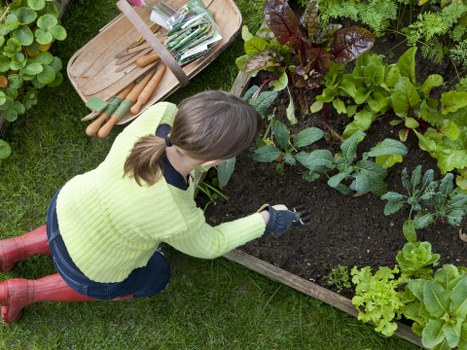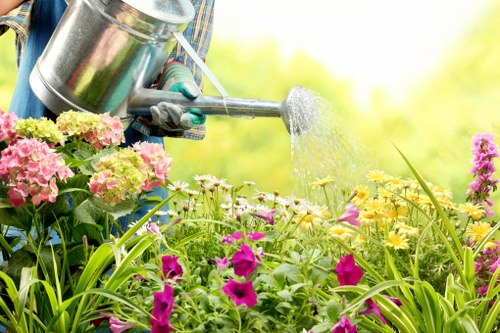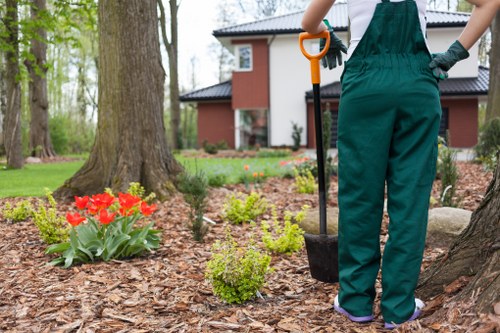Gardeners Maryland: Cultivating Green Spaces Across the Bay

Maryland is a haven for gardening enthusiasts, offering a diverse range of climates and soil types that cater to various plant species. Whether you are a seasoned gardener or just starting out, Maryland provides the perfect environment to nurture your green thumb.
The state's rich history in horticulture is evident in its numerous botanical gardens, community plots, and agricultural events. Gardeners Maryland is not just a community; it's a thriving ecosystem where passion for plants brings people together.
Understanding the unique characteristics of Maryland's climate and soil is essential for successful gardening. From the coastal regions to the mountainous areas, each part of Maryland offers distinct challenges and opportunities for gardeners.

The Maryland Climate and Its Impact on Gardening
Maryland boasts a temperate climate with four distinct seasons, making it ideal for a wide variety of plants. The state's climate zones range from USDA Hardiness Zones 5a to 8a, allowing gardeners to grow everything from hardy perennials to exotic annuals.
The long growing season in Maryland provides ample time for plants to thrive. However, gardeners must also be prepared for occasional extremes, such as hot summers and cold winters, which can affect plant health and growth cycles.
Rainfall in Maryland is consistent throughout the year, but gardeners should be mindful of drainage and soil moisture to prevent waterlogging and root diseases. Implementing proper irrigation systems and selecting drought-tolerant plants can mitigate these issues.

Top Plants for Maryland Gardens
Choosing the right plants is crucial for a thriving Maryland garden. Native plants, such as Black-eyed Susans and Purple Coneflowers, are well-suited to the local climate and require less maintenance.
Vegetable gardens are popular among Maryland gardeners, with tomatoes, peppers, and lettuce being favorites. These crops not only provide fresh produce but also add beauty and diversity to the garden.
Ornamental plants like Hydrangeas and Azaleas flourish in Maryland's climate, offering vibrant colors and textures. Incorporating a mix of flowering and foliage plants can create a dynamic and visually appealing garden space.

Gardening Tips for Maryland Residents
Successful gardening in Maryland requires careful planning and attention to detail. Starting with healthy soil is the foundation of any garden. Testing soil pH and nutrient levels can help gardeners amend their soil for optimal plant growth.
Proper watering techniques are essential, especially during the hot summer months. Drip irrigation systems can provide consistent moisture while conserving water and reducing the risk of fungal diseases.
Pest management is another critical aspect of Maryland gardening. Integrated Pest Management (IPM) practices, such as using beneficial insects and organic treatments, can help control pests without harming the environment.

Community and Resources for Gardeners in Maryland
Maryland offers a wealth of resources for gardeners, including local clubs, extension services, and community gardens. These organizations provide valuable information, workshops, and networking opportunities for both novice and experienced gardeners.
Participating in local gardening events, such as plant sales and garden tours, allows gardeners to exchange ideas and showcase their plants. These events foster a sense of community and encourage the sharing of gardening knowledge.
Online forums and social media groups dedicated to Maryland gardening are excellent platforms for seeking advice, sharing successes, and connecting with fellow gardeners across the state.

Nearby Areas: Expanding Your Garden Horizons
Maryland's neighboring areas also offer fantastic opportunities for gardening enthusiasts. Each region has its own unique climate and soil conditions, providing a diverse range of gardening experiences.
Washington D.C. is just north of Maryland, offering urban gardening spaces and botanical gardens that inspire city gardeners.
Pennsylvania to the north features rich agricultural lands and a variety of native plant species ideal for gardeners looking to diversify.
Virginia to the south provides a warmer climate, perfect for growing a different set of plants and experimenting with new gardening techniques.
Delaware to the east offers coastal gardening opportunities, including salt-tolerant plants and seaside landscapes.
West Virginia to the west presents mountainous terrains, allowing gardeners to explore alpine plants and terraced gardening.
New Jersey to the northeast is known for its rich soil and extensive gardening communities, making it a great neighbor for Maryland gardeners.
New York further north offers a diverse climate range, giving gardeners the chance to grow both cold-hardy and heat-loving plants.
Ohio to the northwest boasts fertile lands and a strong gardening tradition, providing inspiration and resources for Maryland gardeners.
Massachusetts to the northeast brings a cool climate and a variety of ornamental plants suited for picturesque gardens.
Wisconsin to the northwest features robust agricultural practices and a wide selection of fruits and vegetables for dedicated gardeners.
Conclusion
Gardening in Maryland is a rewarding endeavor that offers endless possibilities for creativity and growth. By understanding the local climate, selecting appropriate plants, and utilizing available resources, gardeners can cultivate beautiful and productive gardens.
Engaging with the gardening community and exploring nearby areas can further enhance your gardening experience, providing new ideas and expanding your horticultural knowledge.
Whether you are tending to a small balcony garden or managing a sprawling backyard, Maryland's diverse environment supports all levels of gardening passion. Embrace the opportunity to grow, learn, and connect with fellow gardeners in this vibrant state.
Frequently Asked Questions
- What is the best time to start gardening in Maryland?
The best time to start gardening in Maryland is in early spring after the last frost date. This allows plants to establish before the heat of summer.
- Which plants are most resistant to Maryland's climate?
Native plants such as Black-eyed Susans, Purple Coneflowers, and Hydrangeas are highly resistant and thrive in Maryland's climate.
- How can I improve soil quality in my Maryland garden?
Improving soil quality can be achieved by adding compost, organic matter, and conducting soil tests to amend pH and nutrient levels as needed.
- Are there community gardening resources available in Maryland?
Yes, Maryland has numerous community gardens, local gardening clubs, and extension services that provide resources and support for gardeners.
- How do I manage pests organically in my Maryland garden?
Implementing Integrated Pest Management (IPM) practices, such as using beneficial insects, organic pesticides, and maintaining healthy plant growth, can effectively manage pests organically.